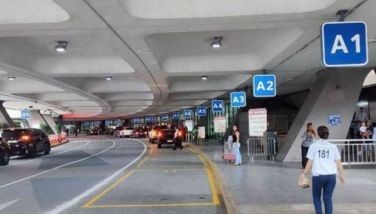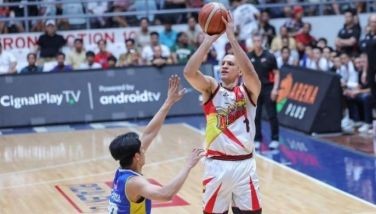Export competitiveness going, going, gone?

January 30, 2004 | 12:00am
Economists were taken aback upon learning that official figures recently released by the National Statistics Office (NSO) indicated a 4.9-percent year-on-year drop in the country’s November exports, instead of registering that much-anticipated rebound in the sector. It was not something expected in November, traditionally being one of the stronger export months ahead of the Christmas season.
The statistical report also said that electronics – representing a solid 65 to 70 percent of the country’s total exports – fell by 10.3 percent, thereby causing figures for the first 11 months of 2003 to rise by only 0.5 percent compared to the more robust previous year-to-date tally.
The NSO data also claims that semiconductors, which accounts for 44 percent share of the total electronics exports, showed a decline of 13.4 percent to $1.3 billion from $1.5 billion during the same period last year.
What could have been wrong? Aghast and unbelieving, the National Economic and Development Authority (NEDA) is saying that some critical data must have been missed out. In fact, electronics exporters are up in arms saying that by their reckoning, figures still reflected growth even if not as optimistic as they had projected.
Notwithstanding the ruckus on whatever the true end-November figures are, the only thing certain is that our export volumes continue to be anemic compared to other Asian-exporting countries that are now already enjoying double-digit growth.
The country should now face the music more than ever or risk throwing away all. More than quibbling over the data’s credibility or believability, the Philippines should be alarmed that the country is hopelessly losing its grip on its vaunted export competitiveness in the globalized economy.
The way things are moving, we may not even meet half of the country’s five-percent export growth target for 2003. And if the November data is an indication of how things are going to be months ahead, the 10-percent growth target this year may also be impossible.
Building a roadmap to export recovery begins with recognizing our own limitations, starting with why foreign direct investments (FDI) in the country have remained relatively anemic compared with the growths registered by China, Singapore, Taiwan and even Thailand and Malaysia.
Promoting the Philippines as an investment site takes more than lip service, and necessitates a multi-pronged strategy and strong political will that would not only improve the country’s image but would also control manufacturing costs, target specific sectors for development, and provide incentives to entice more businesses to come in.
For instance, steps should be taken to lower electricity costs, which have been a major concern of businesses nationwide. We are said to have one of the highest power rates in Asia.
While electricity costs have burdened not only investors but even the consuming public, indications are that there’s no way but for electricity rates to go up, and that a price cap is not likely as the energy sector is grappling for fresh investments lest we run out of power generating capability.
Tax rates have also been a major challenge for investors, more so with small enterprises. Whether tax privileges should be confined within the economic zones or enjoyed across-the-board, as an incentive to further spur growth in the economy should be carefully weighed.
Rising labor costs and a labor code that gives very little safeguards to employers and everything to employees are considered a major disincentive by investors.
Technically, a large population – such as that of the Philippines – should have been a major advantage as it effectively gives the country a reliable source of manpower (which should have made labor costs cheaper in the process and a ready domestic market).
While countries such as China and Indonesia have succeeded in making their human resource numbers work to their advantage, the Philippines is still trying to figure out its master plan. Luckily, our labor sector is by itself more adaptable and agile.
A new Omnibus Investment Code is needed to rationalize incentives currently available to investors, giving more where more is needed and cutting down where less is deserved.
The proposed code is still languishing in the two chambers’ backburners. Makes you wonder what our senators and congressmen are waiting for? More aggressive and munificent lobby groups?
We need to be competitive before we can actively go for the new and emerging markets of Asia, the Middle East and Europe. However, for us to regain lost competitiveness, adequate responses to the issues raised have to be formulated soon.
The export growth target set for this year, the year of the Monkey, is 10 percent. Is the new secretary for Trade and Industry, Cesar Purisima, chasing an impossible dream? Or, can we expect something from him in the coming months, not being a candidate this coming elections? Or will this just be another impossible dream?
The statistical report also said that electronics – representing a solid 65 to 70 percent of the country’s total exports – fell by 10.3 percent, thereby causing figures for the first 11 months of 2003 to rise by only 0.5 percent compared to the more robust previous year-to-date tally.
The NSO data also claims that semiconductors, which accounts for 44 percent share of the total electronics exports, showed a decline of 13.4 percent to $1.3 billion from $1.5 billion during the same period last year.
What could have been wrong? Aghast and unbelieving, the National Economic and Development Authority (NEDA) is saying that some critical data must have been missed out. In fact, electronics exporters are up in arms saying that by their reckoning, figures still reflected growth even if not as optimistic as they had projected.
The country should now face the music more than ever or risk throwing away all. More than quibbling over the data’s credibility or believability, the Philippines should be alarmed that the country is hopelessly losing its grip on its vaunted export competitiveness in the globalized economy.
The way things are moving, we may not even meet half of the country’s five-percent export growth target for 2003. And if the November data is an indication of how things are going to be months ahead, the 10-percent growth target this year may also be impossible.
Building a roadmap to export recovery begins with recognizing our own limitations, starting with why foreign direct investments (FDI) in the country have remained relatively anemic compared with the growths registered by China, Singapore, Taiwan and even Thailand and Malaysia.
Promoting the Philippines as an investment site takes more than lip service, and necessitates a multi-pronged strategy and strong political will that would not only improve the country’s image but would also control manufacturing costs, target specific sectors for development, and provide incentives to entice more businesses to come in.
While electricity costs have burdened not only investors but even the consuming public, indications are that there’s no way but for electricity rates to go up, and that a price cap is not likely as the energy sector is grappling for fresh investments lest we run out of power generating capability.
Rising labor costs and a labor code that gives very little safeguards to employers and everything to employees are considered a major disincentive by investors.
Technically, a large population – such as that of the Philippines – should have been a major advantage as it effectively gives the country a reliable source of manpower (which should have made labor costs cheaper in the process and a ready domestic market).
While countries such as China and Indonesia have succeeded in making their human resource numbers work to their advantage, the Philippines is still trying to figure out its master plan. Luckily, our labor sector is by itself more adaptable and agile.
The proposed code is still languishing in the two chambers’ backburners. Makes you wonder what our senators and congressmen are waiting for? More aggressive and munificent lobby groups?
We need to be competitive before we can actively go for the new and emerging markets of Asia, the Middle East and Europe. However, for us to regain lost competitiveness, adequate responses to the issues raised have to be formulated soon.
The export growth target set for this year, the year of the Monkey, is 10 percent. Is the new secretary for Trade and Industry, Cesar Purisima, chasing an impossible dream? Or, can we expect something from him in the coming months, not being a candidate this coming elections? Or will this just be another impossible dream?
The energy sector has again been in the limelight with the recent spate of oil price increases, the Meralco electricity rate hike, the looming power crisis in Southern Philippines, and the lament of exporters on the uncompetitive domestic power cost, among other issues. Watch it. Should you wish to share any insights, write me at Link Edge, 4th Floor, 156 Valero Street, Salcedo Village, 1227 Makati City. Or e-mail me at [email protected]. If you wish to view the previous columns, you may visit my website at http://bizlinks.linkedge.biz. BrandSpace Articles
<
>
Trending
Latest
|





























